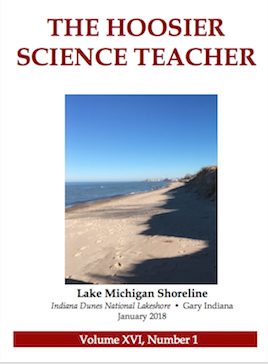Using Expansive Framing to Enhance Personal Relevancy and Engagement in Science
Main Article Content
Abstract
Downloads
Article Details
In general, authors retain all rights to works they produce (If your work was written under a grant or you transferred your rights in writing check to be sure you still have copyright over the work). Since you have copyright in your work, The Hoosier Science Teacher (THST) published by The Hoosier Association of Science Teachers, Inc. (HASTI) and IUScholarWorks (Indiana University) needs your permission (also called a license) to publish and archive your work. By signing this form, you give permission as provided below. Essentially, the license allows THST to publish your work, post it online and preserve it for the long term. This may require THST to keep multiple back-up copies or convert your work to new hardware and software formats. This permission is non exclusive, which means you do not give up any copyright rights. You can republish your work elsewhere, put it online, translate it into another language, or make other uses. Like all forms of scholarly publishing, print or digital, some publishers will not want to republish material that has already been published. If you offer your work to another publisher, you should tell them it has been published before in The Hoosier Science Teacher.
By signing below, you agreed as follows:
- You grant to THST a non-exclusive, irrevocable, royalty-free, world-wide license to publish, distribute, and archive your article in any format, now known or later invented, in any language, anywhere in the world.
- THST may transfer and sublicense this license to third parties.
- You retain copyright and all other rights not mentioned in this agreement.
- If you publish the article in any other format or venue, you will properly cite the journal as the first publisher.
- You agree to following license for THST to post and archive the Article:
- By signing and submitting this license, you (the author(s) or copyright owner) grant to THST the non-exclusive right to reproduce, translate (as defined below), and/or distribute your submission (including the abstract) worldwide in print and electronic format and in any medium, including but not limited to audio or video.
- You agree that THST may, without changing the content, translate the submission to any medium or format for the purpose of preservation.
- You agree that THST may deposit your submission into IUScholarWorks on your behalf.
- You also agree that THST may keep more than one copy of this submission for purposes of security, back-up and preservation.
- You represent that the submission is your original work, and that you have the right to grant the rights contained in this license. You also represent that your submission does not, to the best of your knowledge, infringe upon anyone's copyright.
If the submission contains material for which you do not hold copyright, you represent that you have obtained the unrestricted permission of the copyright owner to grant THST the rights required by this license, and that such third-party owned material is clearly identified and acknowledged within the text or content of the submission.
IF THE SUBMISSION IS BASED UPON WORK THAT HAS BEEN SPONSORED OR SUPPORTED BY AN AGENCY OR ORGANIZATION OTHER THAN THE HOOSIER SCIENCE TEACHER or HASTI Inc, YOU REPRESENT THAT YOU HAVE FULFILLED ANY RIGHT OF REVIEW OR OTHER OBLIGATIONS REQUIRED BY SUCH CONTRACT OR AGREEMENT.
THST will clearly identify your name(s) as the author(s) or owner(s) of the submission, and will not make any alteration, other than as allowed by this license, to your submission.
